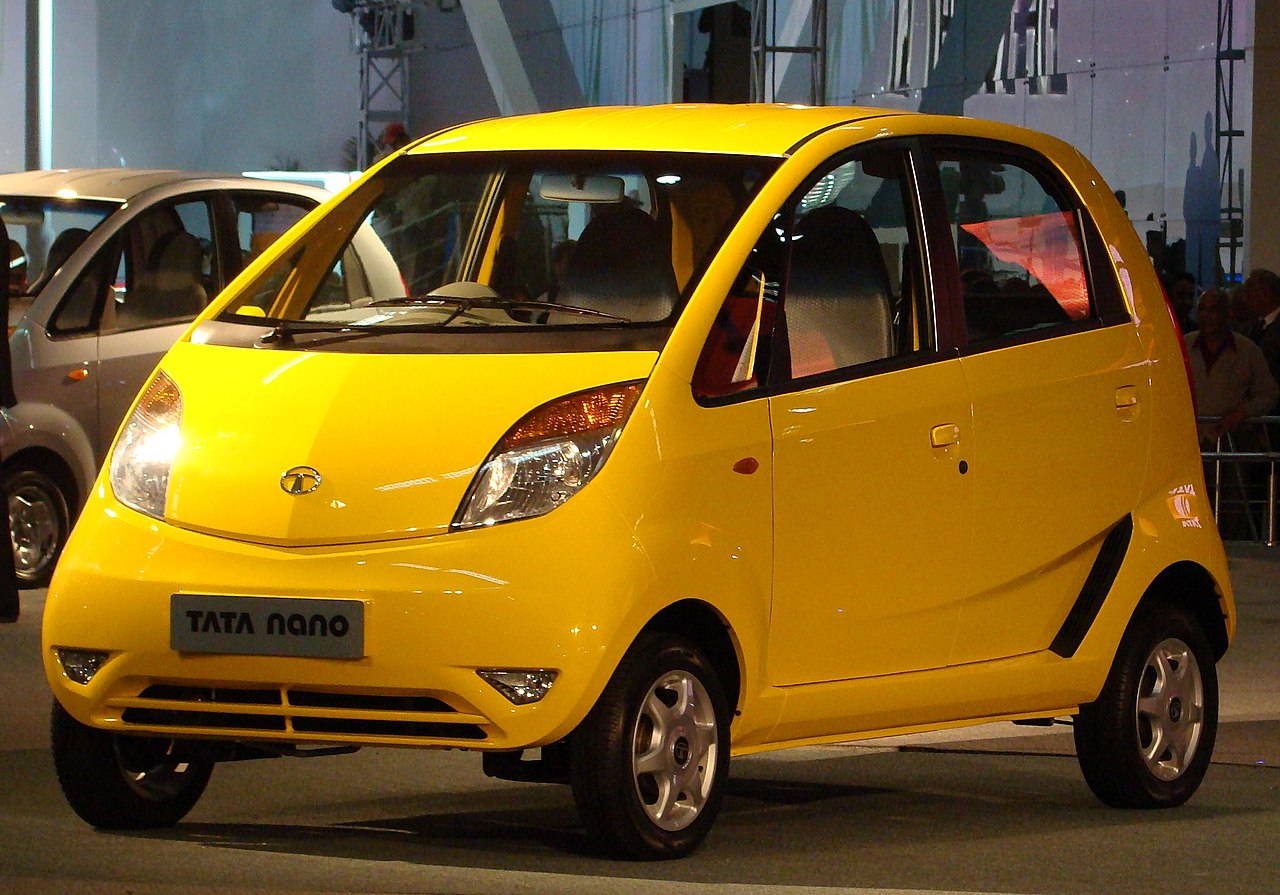The Tata Nano Flop

The Tata Nano was supposed to be a groundbreaking new kind of automobile, but instead it became a disaster.
Ratan Tata conceived the Tata Nano. He spotted a four-membered family riding a scooter in November 2003. It rained and the family managed and settled on the two-wheeler somehow. This had a profound effect on Ratan Tata, prompting him to look for a more secure alternative.
“A few years ago today’s narrative began when I looked at two-wheelers riding families. The dad drives a scooter, his small son faces him and his wife is holding a newborn behind him. I questioned myself if one can think of such a family’s secure, cheap, all-weather conveyance.” Tata remarked on it during the launch.
Tata Nano was developed when the company saw a significant gap in the automobile market. At the 2008 Indian Auto Expo, “The People’s Car” was introduced to serve as a means of transport for the general populace that is both reliable and enjoyable.
Marketing
The “One Lakh Rupees Car” targeted consumers in the middle and upper middle classes. Its unique selling point was its cheap cost.
Since it was built of steel, was quite small and light, and without any frills, it was relatively inexpensive. It was billed as an affordable Indian car.
It was a more secure option than a motorcycle or scooter for a middle-class Indian family of four. The Nano was never meant to compete with automobiles. It was hoped that the trendy colours and roomy interiors would attract customers.
So went wrong?
Poor Positioning
It was hoped that Nano’s low price would help the product find buyers. They failed to take into account that no one wants a daily driver that looks cheap and is badly manufactured (arguably), and so offering it as a cheap automobile in India’s markets suggests inferior quality. Those who could have upgraded to a nicer Nano didn’t choose to do so. People who care about their social standing often try to seem wealthier than they are. A low-quality vehicle that gives the impression of being expensive can never be considered an improvement over motorcycles.
People were not looking for “the cheapest car.” They chose to continue living rather than purchase a modest car. As a result, consumers turned down a cheap, enjoyable, and fully functional car.
Emotionless Advertising
The advertising for the Tata Nano failed to resonate with Indians. Most purchases are made based on emotion. Emotion was missing from the feature-focused advertising strategy.
The company wanted to market features to prove that its cars could do almost everything. They were unable to make an emotional connection with their audience, and as a result, they lost sales.
To be effective, ads need to touch people’s hearts. Some TV commercials were brilliant, but the vast majority of viewers didn’t relate, exacerbating the issue of poor positioning.
Subpar Build
The question of safety was crucial. The business had high hopes that the Nano would pass the Euro NCAP crash test with a perfect score of four out of four stars. In 2014, it missed out on the AltemeyerDeutscher Automobile-Club (ADAC) evaluation. There were no safety features for adults in the Nano. It was also not as safe as Tata said it would be, and it did not pass UN safety criteria. The Nano was too light to handle India’s jarring roads. The prospects of driving were uncertain.
Several Nanos mysteriously burned to the ground. The company claimed that the problem was caused by exhaust-related foreign electrical equipment. Worse, they refused to recall the vehicles with faulty technology, instead extending the warranty to four years and offering to repair the problematic components in previously sold vehicles. The Tata Nano’s demise was hastened by its poor customer service.
Poor Public Relations
The automaker’s PR exacerbated the situation. While everyone concentrated on how many devices caught fire, the corporation neglected this critical fact. That persuaded the public that Tata took shortcuts in production to make the vehicle affordable. Combined with poor marketing and promotion, this was one of the main reasons first-time automobile purchasers avoided the Nano.
Pricing
The actual on-road price of a Tata Nano was 2.59 lakh rupees, not 1 lakh as was first advertised. Its main competitor, the Maruti 800, set buyers back 2.88 lakh rupees.
This is what ultimately doomed the automobile, and it was taken off the market.
Reference
https://gomechanic.in/blog/tata-nano-what-went-wrong/
https://www.peppercontent.io/blog/why-tata-nano-branding-was-a-failure/
http://journalstd.com/gallery/22-oct2021.pdf




It would be interesting to see an Indian perspective of why the Maruti 800 succeeded in the 1980s where the Nano failed decades later. As an American looking in from the outside, I can see that the closed market and the outlandish datedness of the Hindustan Ambassador (1956 Morris Oxford) and Premier Padmini (1958 Fiat 1100) were big factors, leaving the Maruti the only reasonably modern car available.